Tanah Lot, Bali Overview
Situated on a captivating offshore rock in the Tabanan regency of Bali, Tanah Lot, meaning ‘Land on the Sea,’ is a Hindu shrine with a history dating back around 500 years. This sacred site, an amalgamation of Balinese and Hindu mythology, features a base adorned with sea snakes, providing a natural source of holy water. While the inner sanctum is off-limits to foreigners, visitors can stroll to the main temple area to witness the enchanting sunset.
The Tanah Lot temple stands approximately 300 meters (over 980 feet) off the island shore and is one of seven temples dotting the Bali coast. From this vantage point, the Pura Ulu Watu temple on the southern cliffs and expansive azure waters to the west, near Negara, are visible.
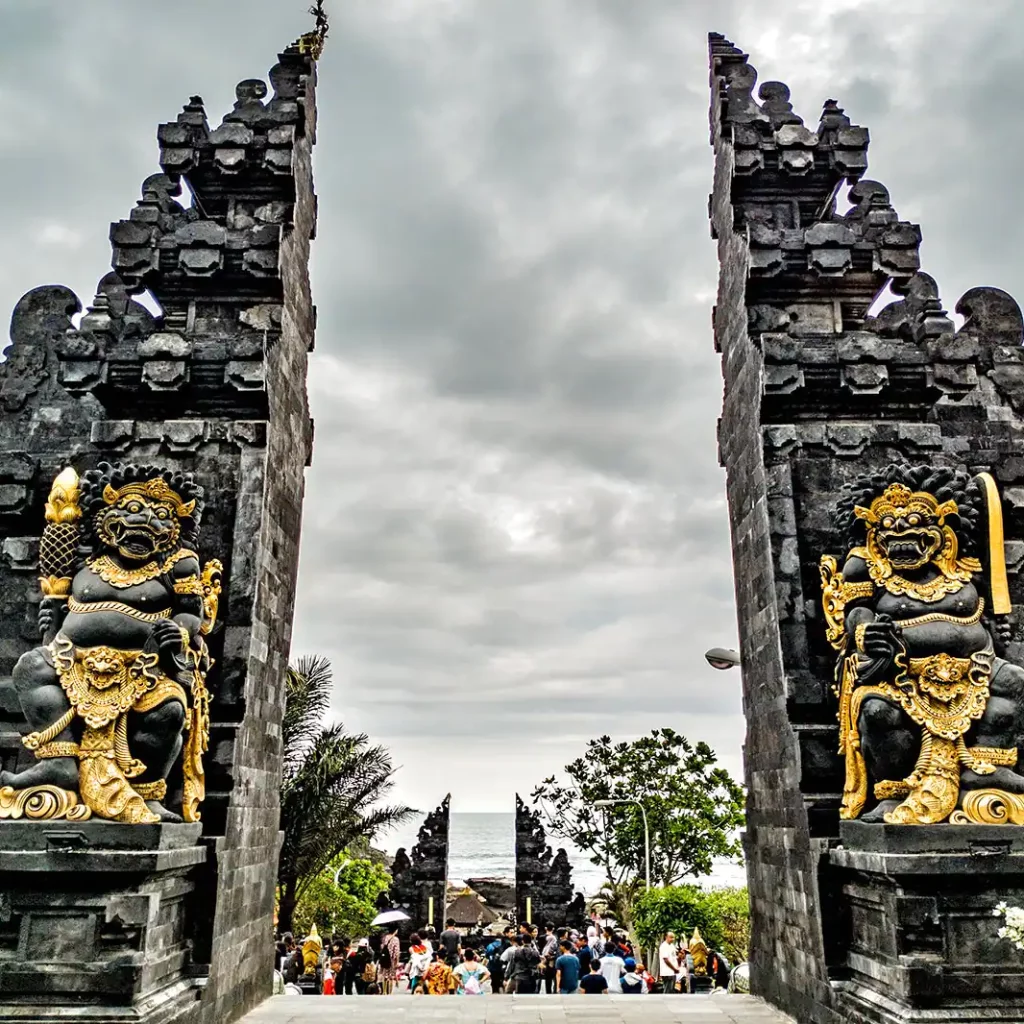
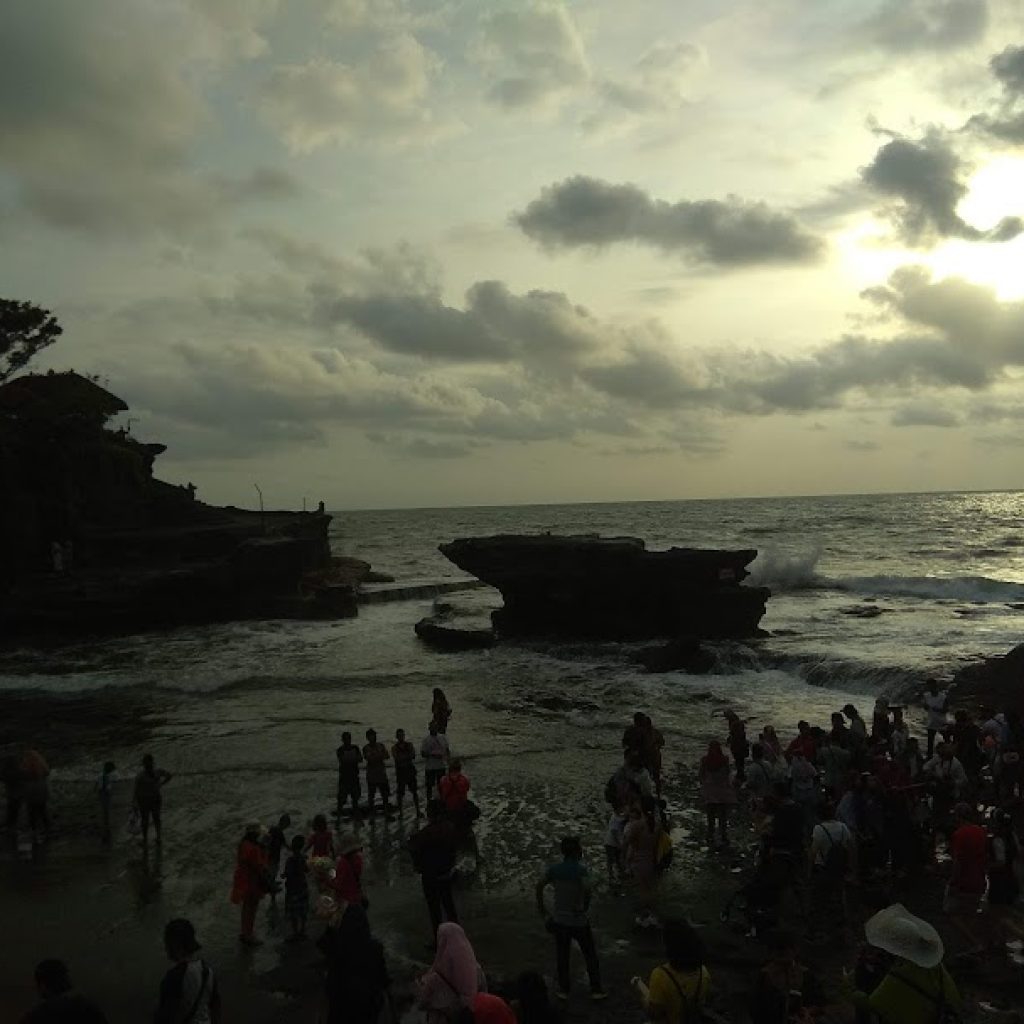

Visiting the pinnacle of Tanah Lot is reserved for priests and locals, yet tourists can explore the temple’s base and receive blessings from the small shrine there. Recognized for its remarkable architecture, intricate rock formations, and a backdrop of the stunning Indonesian waters, Tanah Lot is hailed as a paradise for photographers.
Legend has it that Tanah Lot was conceptualized by Danh Hyang Nirartha, a 16th-century Hindu traveler and religious figure. Seeking refuge on a rock along the Tabanan coast during his travels through Bali, Nirartha experienced the calming spirit of the area. Local fishermen, recognizing his presence, offered food and gifts. Convinced of the sacredness of the location, Nirartha urged the locals to construct a shrine to worship the Balinese sea gods. Despite initial resistance from the local chieftain, Nirartha reportedly moved the rock, known as ‘Gili Beo,’ to its current position in the sea using his own hands. The Tanah Lot temple was then built on this rock for the sea god Dewa Baruna. Before departing, Nirartha gifted the local chief with a kris, a magical Indonesian dagger.
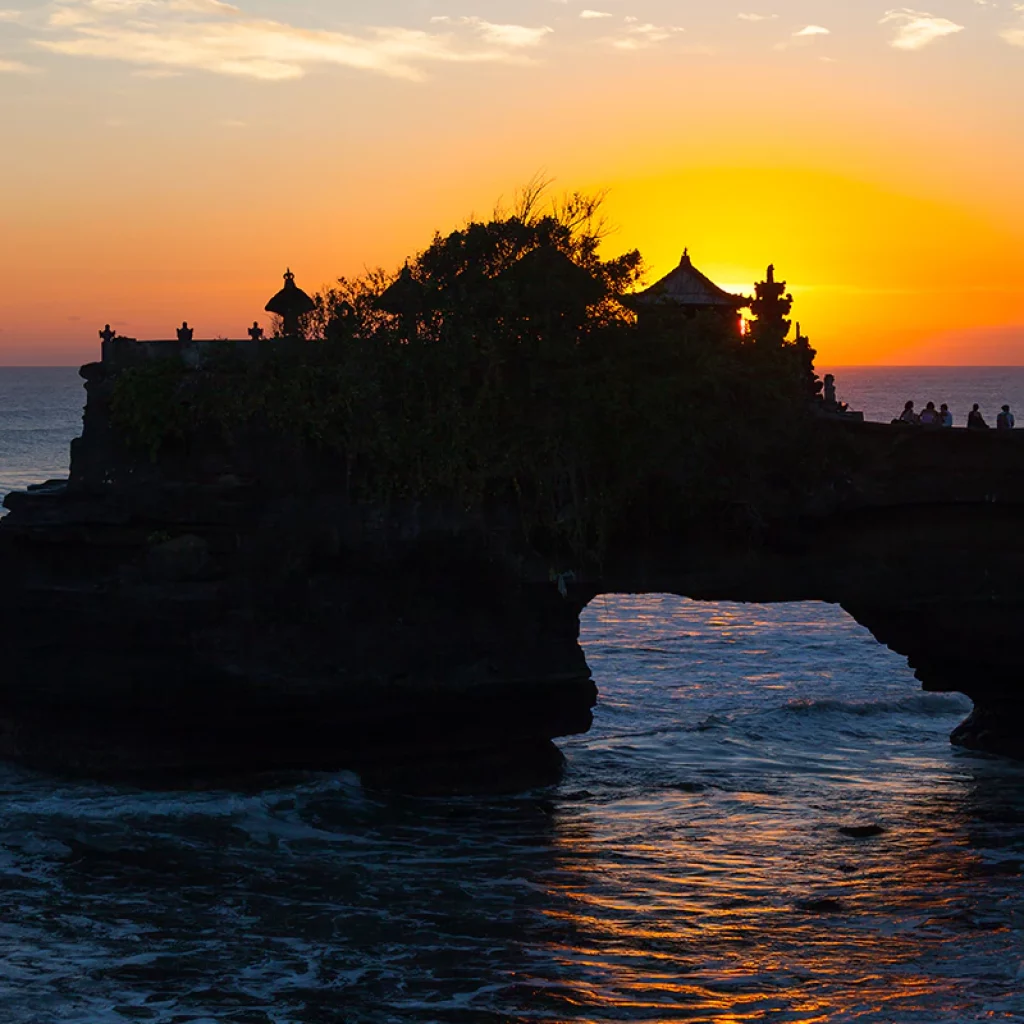
Restoration of Tanah Lot
In the 1980s, signs of erosion and gradual deterioration prompted restoration efforts for Tanah Lot. The temple, facing the ocean’s rough tides for decades, underwent significant restoration, replacing eroded rock with artificial components. The inside areas of the temple were inaccessible until 2014 due to ongoing restoration work.
Concrete supports were added along the Tabanan shore in 1986, along with tetrapods to redirect waves. While these measures protected the temple, they impacted its aesthetic appeal and caused an accumulation of sand along the shore, affecting marine life. Collaborative efforts with the World Monuments Fund led to improvements, including fencing around the temple and the establishment of designated zones for different purposes.
Best Time to Visit Tanah Lot
The temple is open for prayers throughout the day, while tourism hours are from 10:00 AM to 7:00 PM year-round. To experience the temple in the midst of searing heat and crowds, early morning visits before 9:00 AM are recommended. Alternatively, witnessing the popular sunset is a delightful experience. Each evening, a kecak dance, a form of Balinese Hindu dance, takes place at 6:30 PM after sunset and lasts about an hour. Tickets are required for this performance.
During specific festivals, Tanah Lot becomes a focal point, drawing large crowds on occasions like Kuningan and Odalan. Kuningan marks the end of the Gulangan festival, believed to be when ancestral spirits leave earth for heaven. On the day of Odalan, a village gathering to invite gods to homes, Balinese women carry offerings to Tanah Lot.
Things To Do at Tanah Lot
Sunset at Tanah Lot
As you descend, the temple comes into view from the cliff-side, attracting locals and tourists alike during sunsets. The spectacle of the sun setting behind Tanah Lot is truly spectacular, and a similar experience awaits early risers at sunrise without the crowds.
Beach Near Tanah Lot
At the temple’s rock base, Tirta Pabersihan, a fountain believed to emit holy water, can be found. Priests are often present, sprinkling this holy water on visitors. Guardian snakes inhabit the crevices of the rock base.
Tips on Visiting Tanah Lot
In recent years, the area has been developed to accommodate visitors, including a parking area, toilets, restaurants, and an information center. Parking fees are IDR 5,000 for four-wheelers and IDR 2,000 for two-wheelers.
The entrance fee to Tanah Lot includes insurance coverage due to the unpredictable nature of the waters leading to the sea temple. Additionally, a small donation is generally expected for blessings from the priests.
Taxis are available but may inflate prices. Bargaining skills can determine costs, ranging from IDR 100,000 to IDR 300,000. App-based cabs like Uber can be booked for a fee of around IDR 200,000, but local cabs operate for return trips. Buses from Kuta to Tanah Lot are available, but they cease operation after 5:00 PM.
Shopping Around Tanah Lot
Stairway of Tanah Lot
To reach Tabanan Beach below, visitors must pass through the local Balinese market, offering numerous shops and stalls selling souvenirs, budget clothing, and delicious Indonesian snacks. Traditional snacks to try include jaja kelepon (sugar-filled gelatinous rice balls coated in coconut) and es kelapa muda (chilled coconut). The lively market buzzes with banter, bargaining, and announcements.
How To Reach Tanah Lot
Tanah Lot is easily accessible due to its popularity as a tourist destination. It is a 45-minute drive from Kuta or Seminyak and 30-40 minutes from Ubud by public transport. Traffic congestion during pre-sunset and post-sunset hours can extend travel times, so planning visits outside peak hours is advisable.


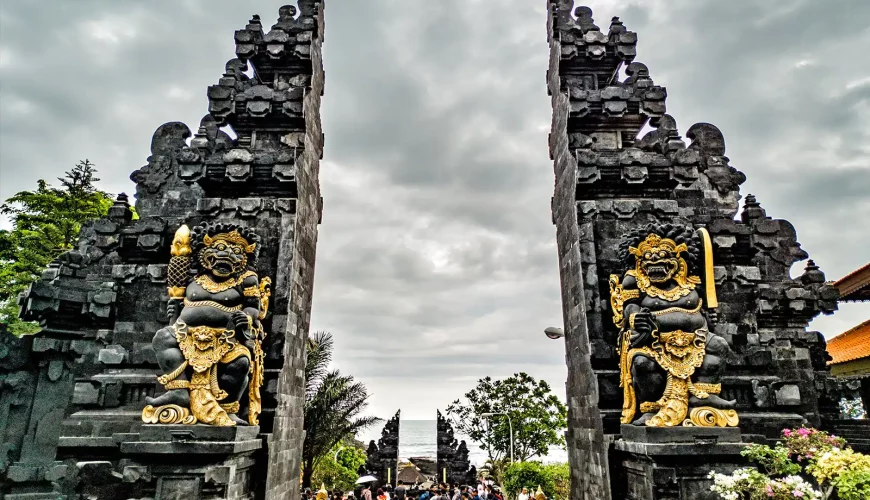
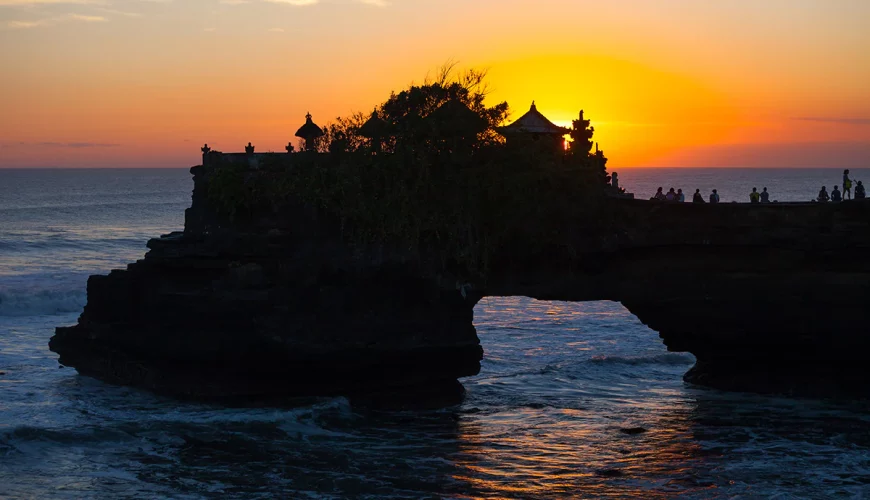
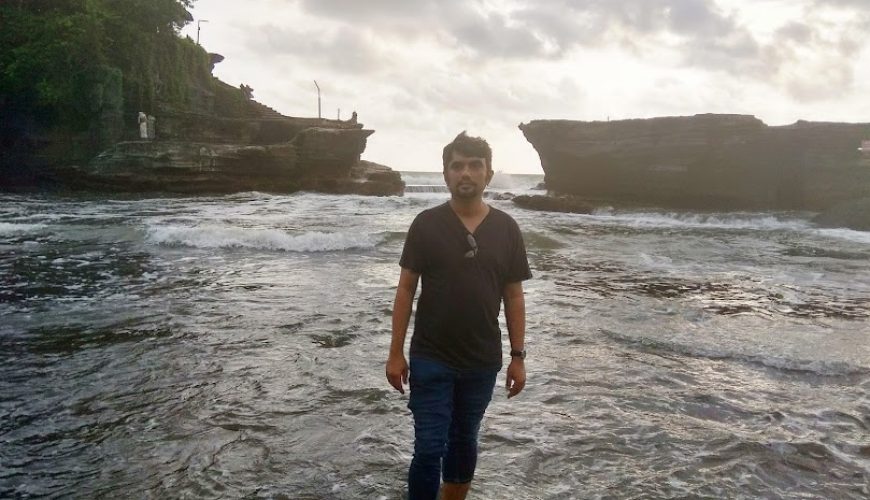
0 Comment